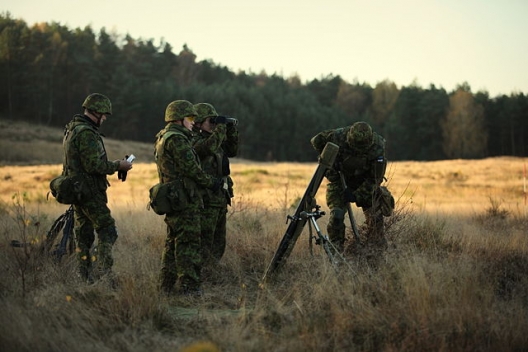 Thousands of ordinary civilians, including doctors, carpenters and teachers, are flocking to join volunteer paramilitary groups in several European countries, with some doubling in size since the start of the Ukraine crisis, Newsweek has discovered.
Thousands of ordinary civilians, including doctors, carpenters and teachers, are flocking to join volunteer paramilitary groups in several European countries, with some doubling in size since the start of the Ukraine crisis, Newsweek has discovered.
In Estonia, Lithuania, Sweden and Poland, volunteer defence leagues, many of whom train with real weapons and would be called upon to support the army in the event of a conflict, are seeing record numbers of ordinary civilians joining up.
Finland’s military sent out letters to all 900,000 of its former conscripts at the beginning of this month, informing them of what their roles would be in a “crisis situation.” Earlier this year, the Polish parliamentary speaker announced that parliamentarians will be offered the opportunity to train at an army firing range and that though the cut off age for the Polish military is 50, there would be exceptions for “healthy and youthful-looking” MPs.
Since the beginning of the violence in Ukraine, the Lithuanian Riflemen’s Union (LRU), the country’s main paramilitary organisation, first set up in 1919, has grown from 6,000 members to 8,000 members….
Across the border in Poland, it is estimated that the country’s volunteer paramilitary groups boast 10,000 members. Earlier this year, the defence minister Tomasz Siemoniak announced that 2,500 volunteers would form the backbone of volunteer units to be mobilized in the event of a war, and be paid a wage, marking the first time Poland has given these volunteer paramilitary groups official recognition.
It is a similar story in Estonia. According to Silva Kiili, a research fellow at Tallinn’s International Centre for Defence and Security, the size of the Estonian Defence League has doubled in comparison to pre-Ukraine crisis levels. In 2014 alone, more than 1,000 new volunteers joined, and the total figure now stands at over 24,000, out of a total population of 1.2m….
In 2013, the Swedish Home Guard received 1,500 expressions of interest in joining and during 2014, that figure doubled. According to [Swedish Armed Forces’ Anette] Sällström, this is partly due to the crisis in Ukraine, but also the lure of modern and accurate equipment and the crisis in Syria, which could be other factors in encouraging new members.
Image: Estonian Defence League mortar platoon, Oct. 30, 2013 (photo: Cpl Madis Veltman/Estonian Army)

